Mild Autism
Understanding the Nuances of Mild Autism

An Insight into Mild Autism Spectrum Disorder
Mild autism, often classified as Level 1 autism spectrum disorder in the DSM-5-TR, represents a subset of autism that involves fewer and less severe signs of social and communication challenges. While individuals with mild autism may appear to function well independently, they often face subtle difficulties that influence their social interactions and daily routines. This comprehensive overview aims to shed light on the characteristics, diagnosis, causes, behavioral signs, presentation across different age groups and genders, management strategies, current scientific research, and ways to improve awareness surrounding mild autism.
Defining Mild Autism and Its Core Characteristics
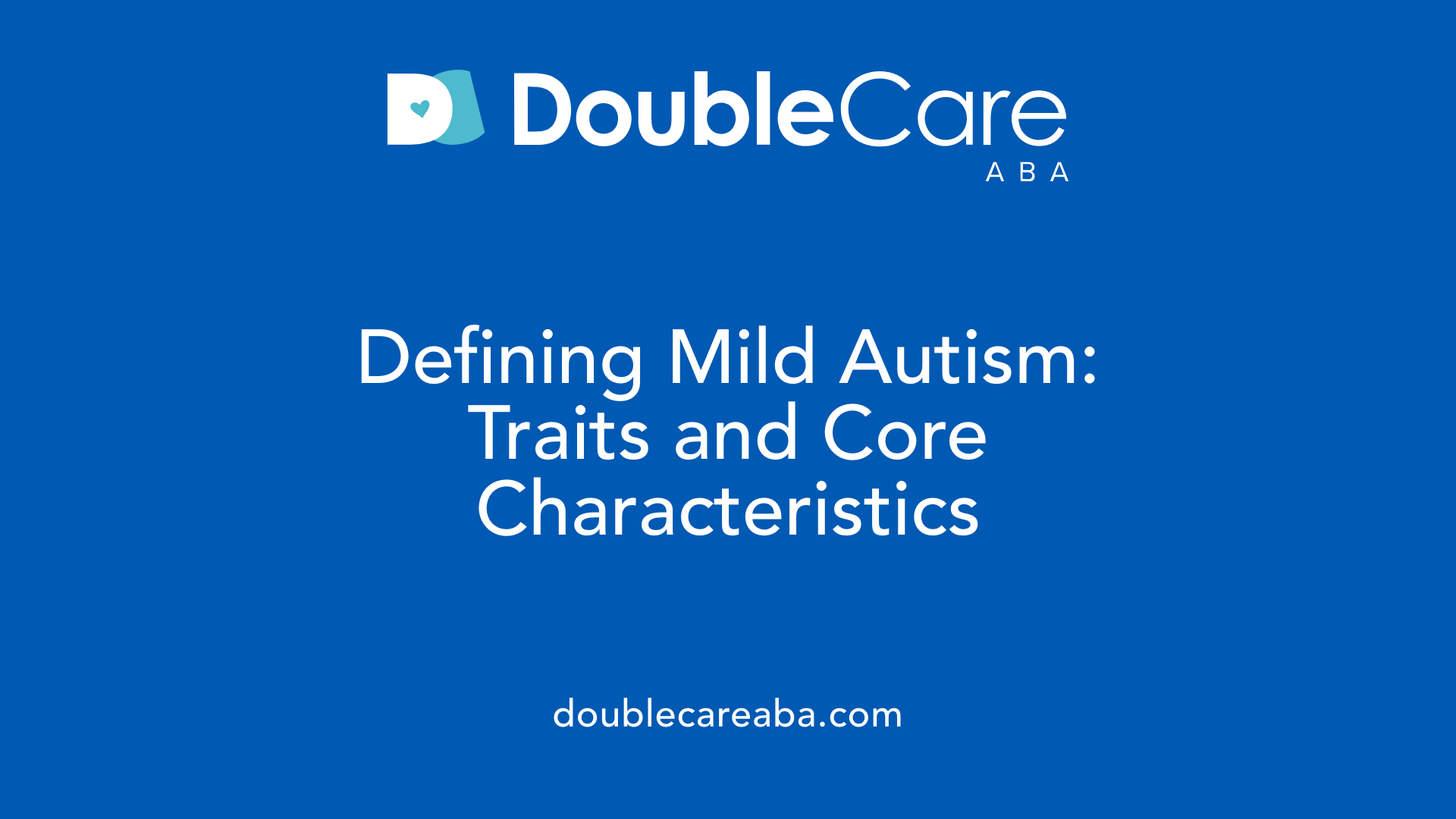
Traits of Level 1 autism (mild autism)
Mild autism, often referred to as Level 1 on the autism spectrum, is characterized by fewer and less intense symptoms compared to more severe forms of autism. Individuals in this category typically possess average or above-average cognitive abilities. They may experience challenges in social communication, such as difficulty starting or maintaining conversations, and struggle to interpret social cues like facial expressions or tone of voice.
These challenges can make forming and sustaining relationships more difficult. Despite these social hurdles, many people with mild autism are capable of functioning independently, although they might prefer routines or specific interests that provide comfort.
Behaviorally, individuals may engage in repetitive actions, such as lining up toys or fixating on particular topics. They might also be sensitive to sensory inputs, experiencing discomfort from loud noises or bright lights.
Support needs and daily functioning
Support requirements for individuals with Level 1 autism can vary considerably. Support may involve assistance with social skills, organizational tasks, or coping strategies during stressful situations. During periods of stress, such as autistic burnout, temporary increases in support needs may occur.
Although many adults with mild autism manage daily tasks independently, tailored support can enhance their quality of life and help prevent escalation of challenges. Early diagnosis and intervention, even in adulthood, can improve self-understanding, communication, and relationships.
Typical behavioral and social signs
Common signs of mild autism include difficulty understanding social cues, reluctance to initiate social interactions, and a preference for routine activities. People with mild autism may have intense interests or hobbies, keen attention to detail, and may deliberately hide symptoms or mask behaviors in social settings.
They may also show signs such as sensory sensitivities, repetitive behaviors, difficulty with transitions, and struggles with organization and planning. Recognizing these signs can help in seeking appropriate assessments and support to enable individuals to thrive, leveraging their strengths while managing challenges.
Understanding these traits supports a broader awareness that autism exists on a spectrum, with many individuals leading fulfilling lives through appropriate support and self-awareness.
Diagnosis and Assessment of Mild Autism
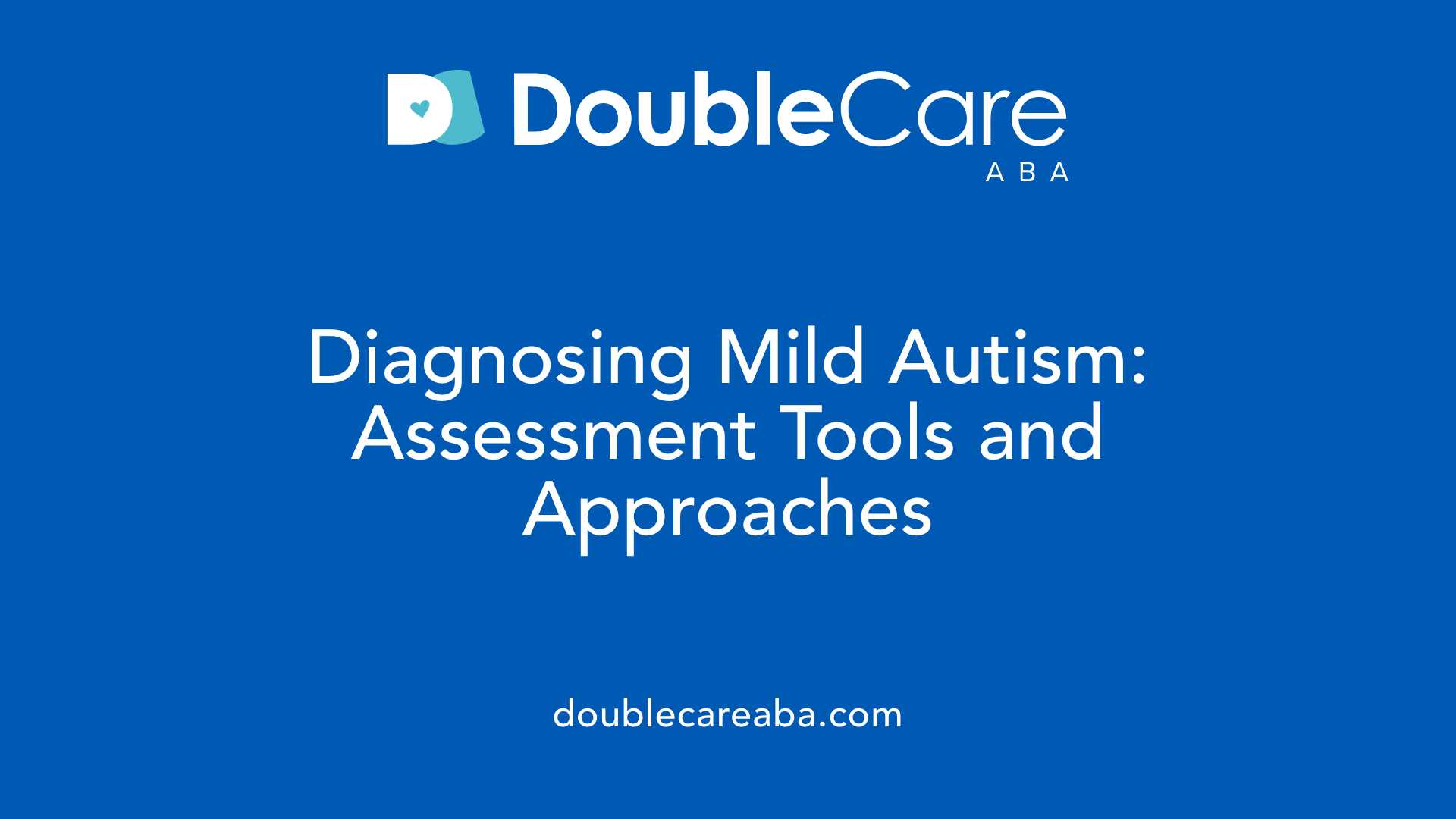
How is mild autism diagnosed and assessed?
Mild autism, often aligned with level 1 autism spectrum disorder in the DSM-5 terminology, is diagnosed through a combination of thorough assessments. Clinicians rely on clinical observations, developmental history, and standardized evaluation tools to arrive at an accurate diagnosis.
Standard instruments such as the Autism Diagnostic Observation Schedule (ADOS-2) and Autism Diagnostic Interview-Revised (ADI-R) are commonly used to assess social communication skills and repetitive behaviors. These assessments involve structured interactions and detailed interviews with caregivers. They help identify persistent difficulties in communication and social interaction, along with restricted or repetitive behaviors.
Gathering developmental history is essential. Caregivers are asked about early milestones like eye contact, responding to their name, sharing interests, and using gestures or speech. Observations during assessments focus on social responsiveness, flexibility, and sensory sensitivities.
Additional tools, like the Diagnostic Interview for Social and Communication Disorders (DISCO) and rating scales such as the Autism Spectrum Rating Scale, provide further insight into severity and support needs.
Because symptoms of mild autism can be subtle and may fluctuate over time, clinicians emphasize the importance of ongoing evaluations. These reviews ensure support and intervention strategies remain appropriate as the individual develops.
Detection in early childhood is ideal, but diagnosis can occur later in life, especially when social or behavioral challenges become more noticeable or problematic. Tailored assessment methods help confirm the diagnosis and guide personalized support plans.
Genetic and Environmental Causes of Mild Autism
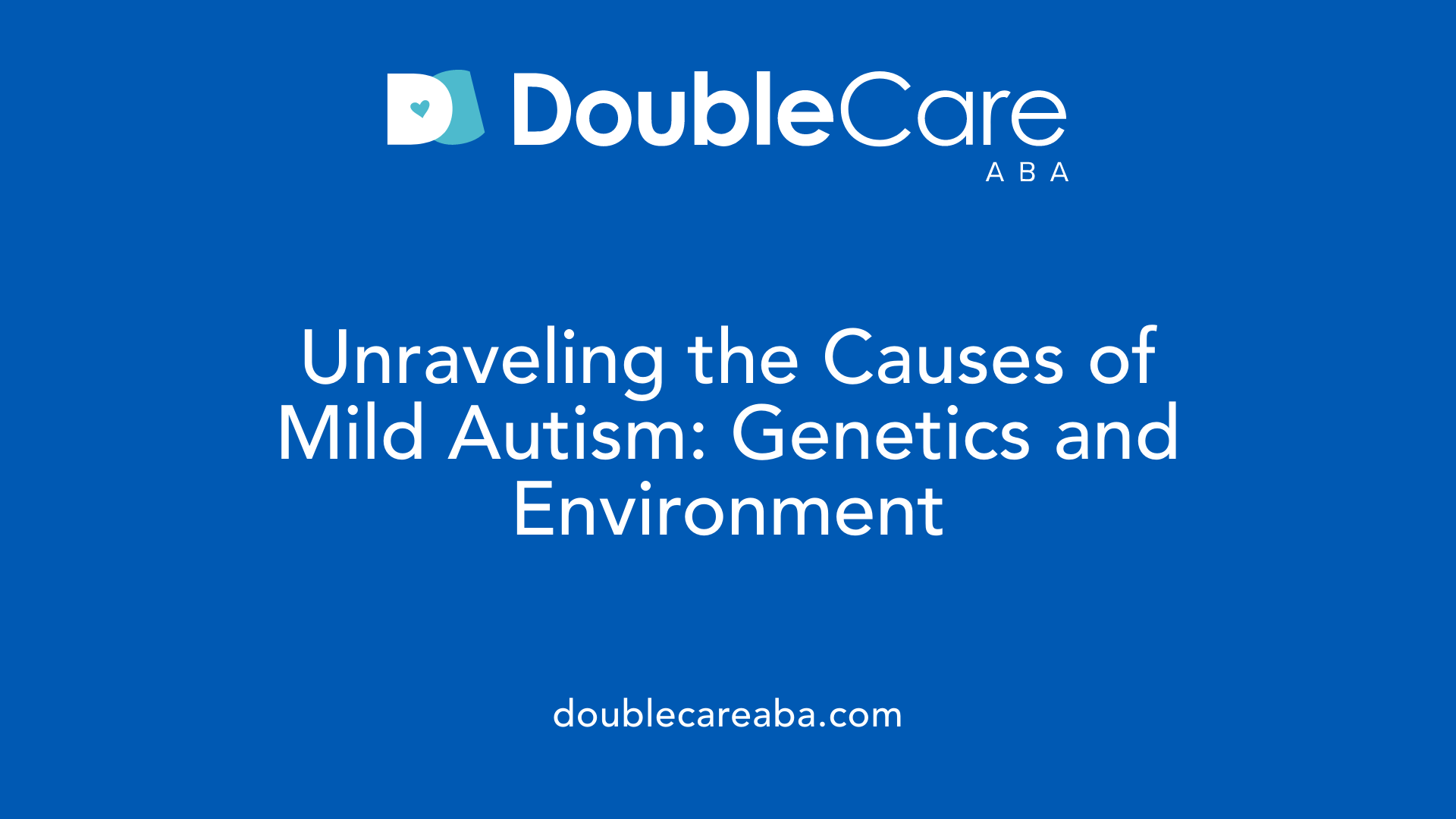
What are the known causes and contributing factors of mild autism?
The origins of mild autism are multifaceted, involving an interplay between genetic predispositions and environmental influences. Researchers have identified that genetic factors play a significant role in the development of autism spectrum disorder (ASD), including mild cases. Variations or mutations in a range of genes related to brain development can increase the likelihood of autism. These genetic changes can be inherited from family members or occur spontaneously, known as de novo mutations. Some genetic syndromes, such as fragile X syndrome and Rett syndrome, are closely linked with ASD.
In addition to genetics, prenatal environmental factors also contribute to the risk of developing mild autism. Factors during pregnancy—such as advanced parental age, exposure to pollutants, pesticides, or other chemicals—can impact fetal brain development. Maternal health conditions, such as diabetes or infections, can also play a role. Birth complications like oxygen deprivation or trauma might further influence brain wiring in ways that increase autism susceptibility.
The interactions between genetic and environmental factors are complex. They influence early brain development, affecting how neurons communicate, form connections, and organize during critical periods. These processes are crucial for social, communication, and behavioral development. Overall, autism, including milder forms, results from the convergence of genetic vulnerabilities and environmental exposures, making each case unique and multifaceted.
Understanding these causes highlights the importance of ongoing research and early intervention strategies, which can support optimal development for children affected by autism.
| Factors | Description | Impact on Brain Development |
|---|---|---|
| Genetic mutations/variations | Inherited or new mutations related to brain growth | Disrupt neural pathways, affect connectivity |
| Prenatal exposures | Pesticides, pollutants, maternal health issues | Affect fetal neural development, plasticity |
| Birth complications | Oxygen deprivation, trauma | Interfere with early neural wiring |
| Environmental chemicals | Chemicals encountered during pregnancy or early childhood | Alter neural signaling, synaptic formation |
This intricate web of causes underscores why autism, including milder forms, has a broad spectrum of presentations and why multifaceted approaches are necessary for understanding and support.
Signs, Symptoms, and Behavioral Traits in Mild Autism
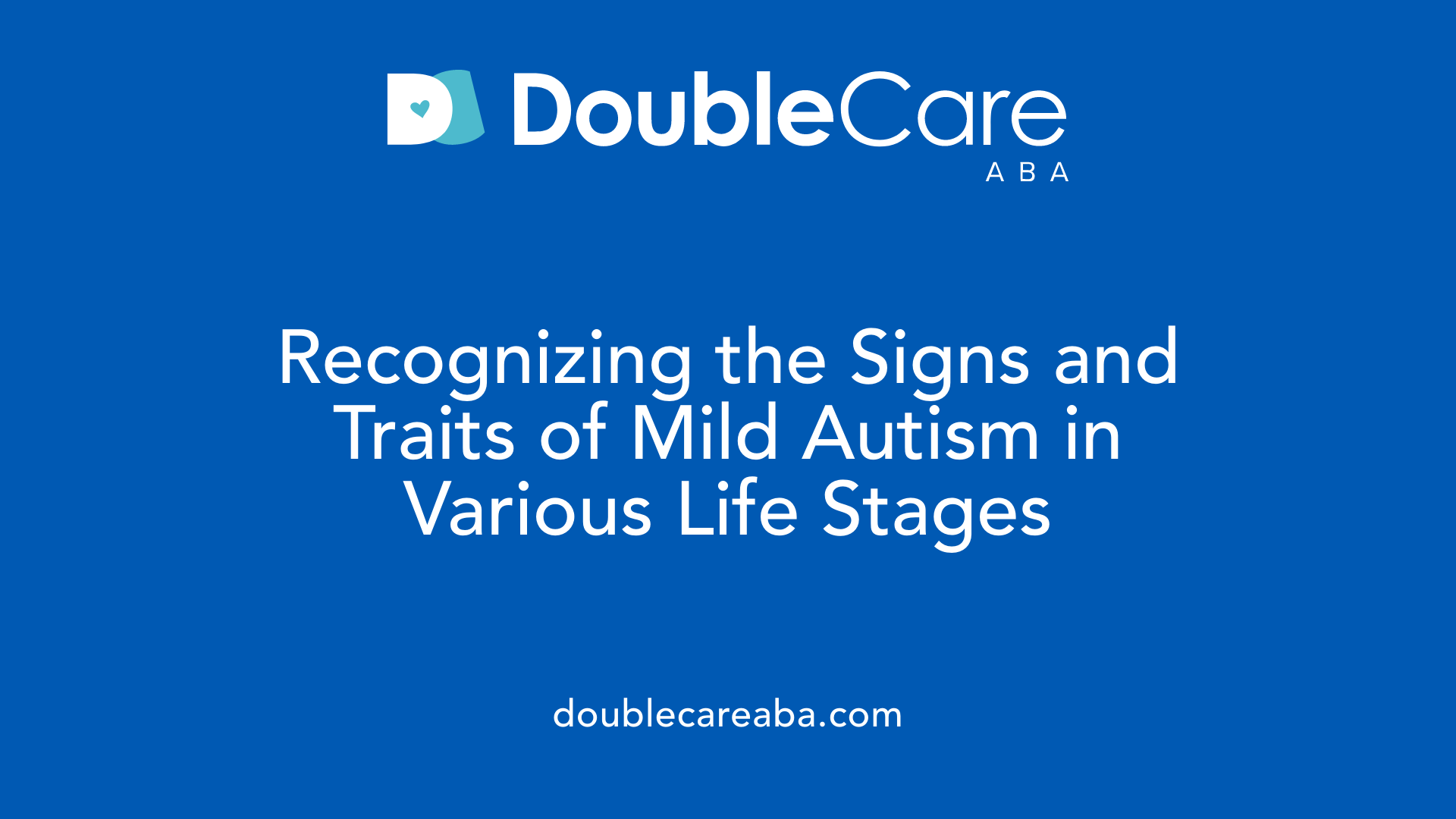
What are the common signs and symptoms of mild autism in children and adults?
Mild autism, often referred to as high-functioning autism or Asperger’s syndrome, presents with subtle differences that can sometimes be overlooked. In children, early signs include less eye contact, limited response to their name, and restricted or repetitive movements like hand-flapping or rocking.
In older children and adults, these signs may manifest as difficulty interpreting social cues, such as facial expressions or body language, and challenges in maintaining conversations. People with mild autism often prefer routines and may feel anxious when faced with unexpected changes.
They might exhibit intense interests in specific topics or hobbies and engage in repetitive behaviors, such as lining up toys or repeating phrases. Sensory sensitivities are also common, with some individuals overwhelmed by loud sounds, bright lights, certain textures, or smells.
Adults often show signs like social withdrawal and difficulty forming or keeping friendships. They might seem blunt, uninterested, or overly literal in communication without any intent to offend.
These signs tend to be less visible than in more severe cases but can significantly impact daily life. Recognition of these subtle behaviors often requires careful observation or professional assessment.
Understanding these symptom patterns is essential for early diagnosis and support, helping individuals navigate social environments and develop strategies to cope with their sensory and social challenges.
Presentation Variances Across Age and Gender
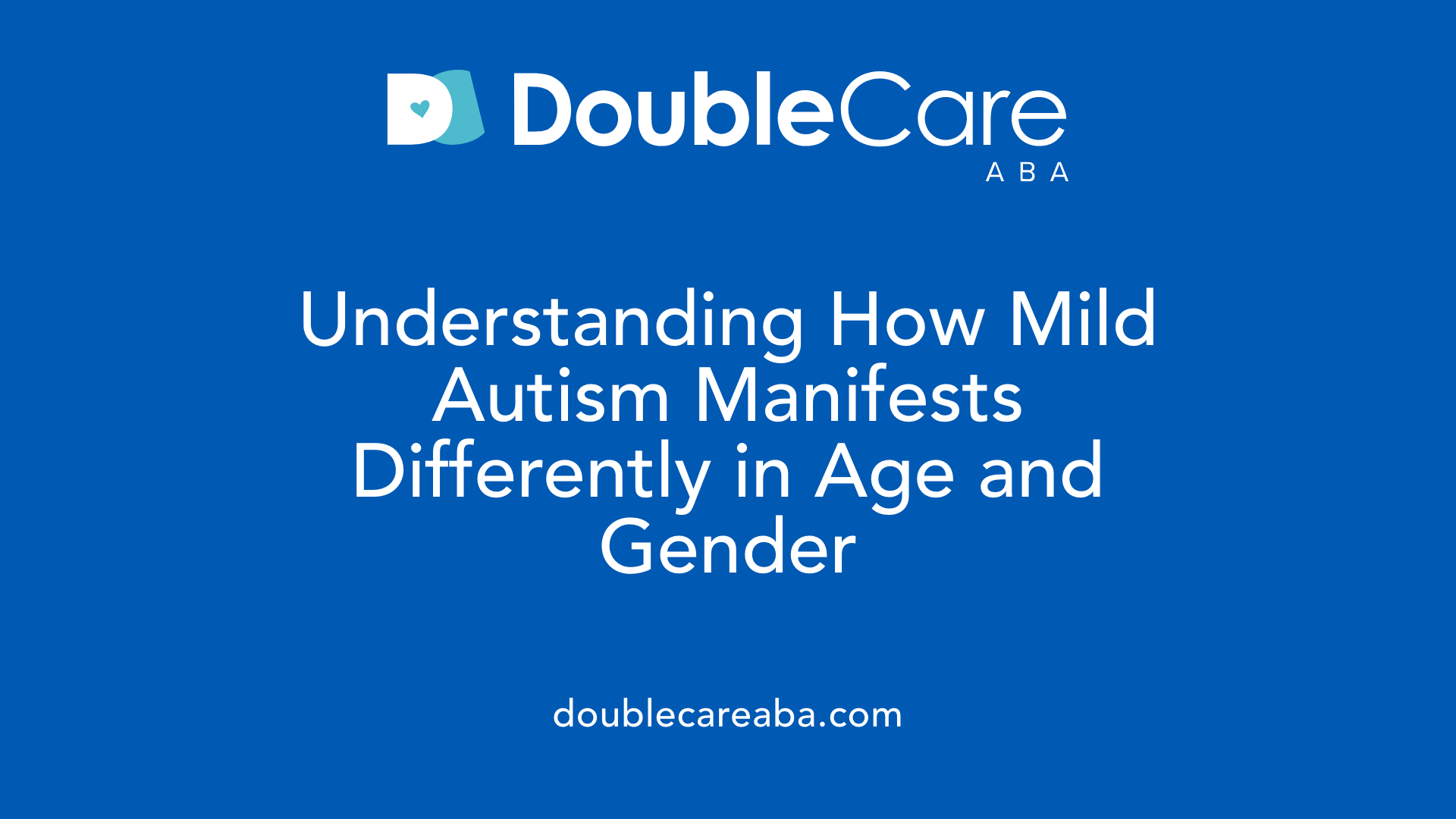
How does mild autism present differently across age groups and genders?
Mild autism, often referred to as high-functioning autism or Asperger’s syndrome, shows a range of signs that can differ considerably depending on age and gender. Understanding these differences helps in recognizing and diagnosing autism early.
In children, early signs of mild autism may include subtle difficulties in social communication, such as limited eye contact, delayed responses to name, or hesitance in engaging in typical play. They might exhibit repetitive behaviors like lining up toys or insisting on routines but may appear less impairing compared to more severe cases. Sensory sensitivities—such as aversion to certain textures or sounds—can also be evident early on.
As children grow into adolescence and adulthood, the presentation can shift. Many individuals develop coping strategies or camouflage their symptoms by mimicking social behaviors, which can hide visible signs. Females with mild autism, especially, often learn to hide their struggles better than males, leading to underdiagnosis.
Camouflaging or masking involves mimicking social cues, suppressing true feelings, or adopting routines without being obvious. Such behaviors can make their experiences less visible but may also lead to increased mental health issues like anxiety or depression.
In adults, signs such as difficulties understanding social cues, forming and maintaining friendships, or navigating workplace relationships remain prevalent. They might prefer routines and become anxious in unpredictable social settings. Many adults with mild autism notice their sensory sensitivities persist, affecting daily life.
Gender differences play a role in presentation. Females tend to internalize their difficulties and may appear more socially competent on the surface. They might have more intense interests that align with social norms, like literature or animals, but still experience internal isolation.
Overall, the way mild autism manifests is highly variable. It depends on developmental adaptations, gender-specific behaviors, and social environment influences, which can make diagnosis particularly challenging, especially for females or adults who have learned to mask their symptoms.
| Age Group | Typical Signs of Mild Autism | Gender-Specific Presentation | Additional Notes |
|---|---|---|---|
| Early childhood | Subtle social delays, repetitive play, sensory sensitivities | Less obvious in girls; may be masked or disguised | Signs are often overlooked or attributed to shyness |
| Adolescence | Preference for routines, difficulty with peer interactions | Females may camouflage better and internalize issues | Increased risk of mental health struggles |
| Adulthood | Social misunderstandings, sensory sensitivities, strong routines | Females may appear more socially adept but struggle internally | Diagnosis may come late, often linked to life difficulties |
Recognizing that presentation varies widely emphasizes the importance of tailored assessment and support, particularly for those whose signs are less overt due to age or gender.
Support Strategies and Management for Mild Autism

What management and support options are available for individuals with mild autism?
For those with mild autism, various strategies and services can make a significant difference in daily life and long-term development.
Behavioral and social skills training are often essential. These programs focus on teaching social cues, improving communication, and reducing challenging behaviors. Techniques like applied behavior analysis (ABA) are commonly used to reinforce positive behaviors and develop new skills.
In addition to behavioral approaches, therapies such as speech and language therapy can help improve expressive and receptive language abilities. Occupational therapy supports sensory integration and daily living skills, helping individuals manage sensory sensitivities and enhance coordination.
Educational and community resources play a crucial role. Tailored support plans in schools, including accommodations and individualized education programs (IEPs), facilitate better learning experiences. Community groups and support networks provide opportunities for social engagement, fostering friendships and reducing feelings of isolation.
Family support and involvement are vital. Family therapy offers emotional guidance, while parent training equips caregivers with strategies to support their loved ones effectively. Planning for the future through life skills training promotes independence, confidence, and participation in community activities.
Overall, these management options aim to improve quality of life, increase social integration, and support ongoing development for individuals with mild autism.
| Support Area | Description | Additional Details |
|---|---|---|
| Behavioral and Social Skills | Focused training to enhance communication and interaction | Includes ABA, social stories, peer modeling |
| Therapeutic Interventions | Target specific challenges like language or sensory issues | Speech therapy, occupational therapy, sensory therapy |
| Educational Support | Accommodations and personalized plans in school | IEPs, classroom modifications, tutoring |
| Community and Family Support | Emotional and practical support for caregivers | Support groups, family counseling, workshops |
| Future Planning | Promoting independence and life skills | Life skills workshops, vocational training |
These comprehensive strategies can help individuals with mild autism lead fulfilling, independent lives while managing their unique challenges.
Current Findings and Future Directions in ASD Research

What does scientific research say about autism spectrum disorder in adults?
Research on autism spectrum disorder (ASD) in adults shows considerable progress in understanding the condition, but many challenges still persist. Studies reveal that autistic adults often encounter difficulties in employment, forming and maintaining social relationships, and managing independence. Mental health issues, such as anxiety, depression, and other co-occurring conditions, are common within this population.
Diagnosing ASD in adults adds complexity because existing assessment tools are primarily designed for children. As a result, many adults remain undiagnosed or diagnosed late in life, which limits access to specialized support and interventions. Despite some signs of social skill development and symptom management over time, societal stigma, lack of awareness, and insufficient age-appropriate services hinder better outcomes.
Ongoing research highlights the importance of developing inclusive support strategies tailored to adult needs. There is a growing emphasis on improving diagnostic methods—such as refined screening tools and clinician training—to better identify ASD in adults. Additionally, listening to autistic individuals' experiences drives the creation of more effective resources and policies.
Future avenues in ASD research focus on understanding the diverse presentations of autism in adulthood, and how support systems can be optimized to improve quality of life. Advancements in neurodevelopmental studies, mental health integration, and societal acceptance are vital for supporting autistic adults effectively.
Understanding the Spectrum and Broader Perspectives
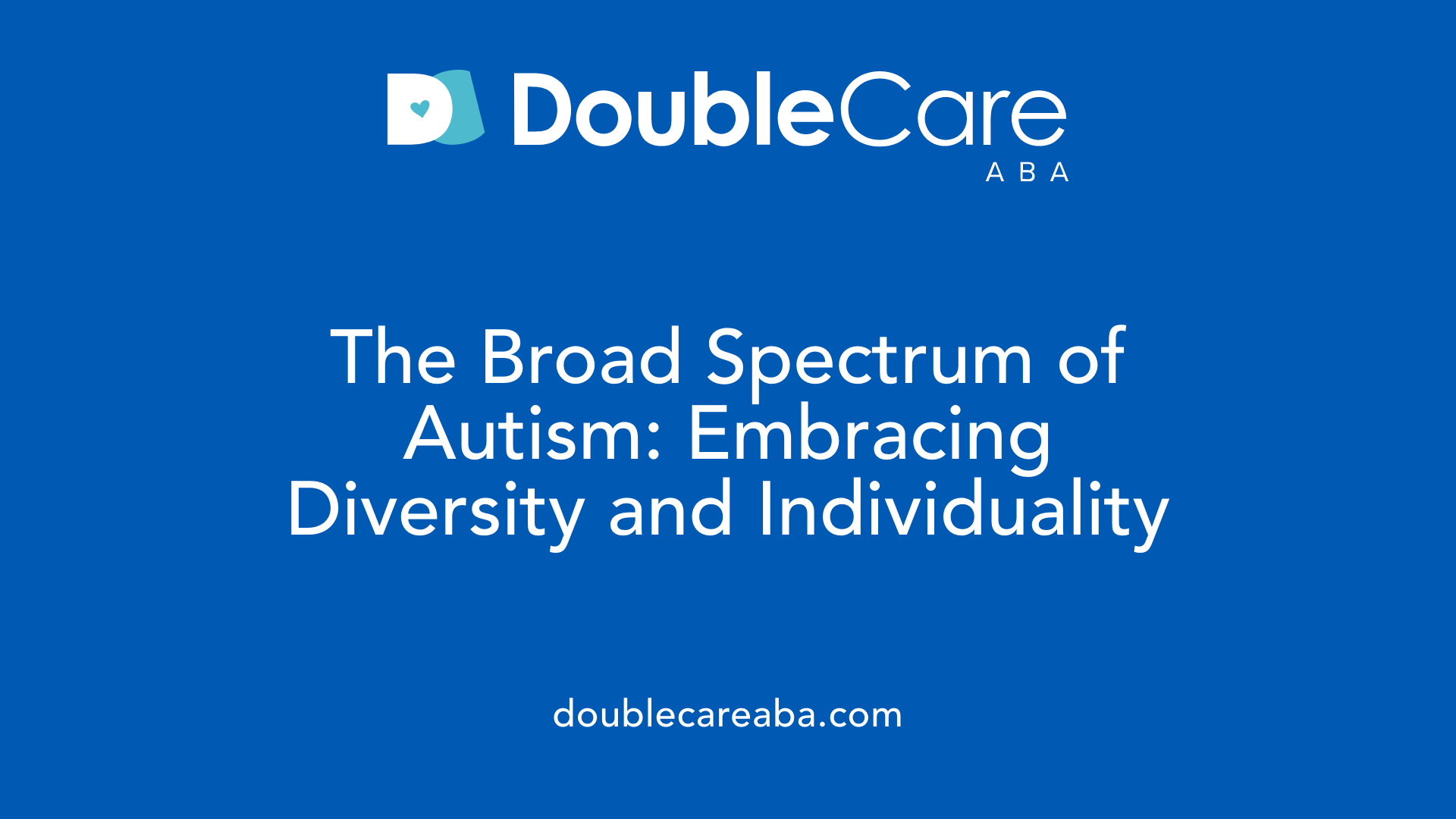
What is autism spectrum disorder and how does mild autism fit within it?
Autism spectrum disorder (ASD) is a lifelong condition that affects how a person communicates, interacts socially, processes sensory information, and exhibits behaviors. It is called a spectrum because its traits and severity vary widely among individuals. Some people with ASD may need significant support, while others, especially those with mild symptoms, might manage daily activities independently.
Mild autism is often referred to as Level 1 autism according to the DSM-5-TR. People in this category typically have fewer and less intense signs of autism, such as difficulties in initiating social interactions or maintaining relationships. Their support needs are lower, enabling many to pursue education, employment, and social relationships successfully.
Diagnosis can occur early in childhood, yet some adults discover they have mild autism later in life. Such a diagnosis helps in understanding their behaviors and challenges, providing access to tailored strategies and support systems.
Overall, ASD is characterized by a wide range of traits, highlighting how diverse the autism experience can be. Recognizing this diversity fosters acceptance and encourages a focus on individual strengths and differences.
Empowering Through Awareness and Support
Mild autism, while often less apparent than more severe forms of autism, encompasses a nuanced range of social, behavioral, and sensory traits that can influence an individual's daily life. Progress in diagnosis, understanding of causes, and tailored interventions continue to improve quality of life for many. As awareness grows, so does the importance of early detection, comprehensive assessment, and supportive environments that recognize individual strengths alongside challenges. Promoting education, reducing stigma, and fostering acceptance are vital steps toward empowering individuals with mild autism and enabling them to lead fulfilling, independent lives.
References
- Understanding Mild Autism
- Autism spectrum disorder - Symptoms and causes
- Signs of autism in adults
- Mild Autism in Adults: Can You Really Be “Mildly Autistic”?
- Signs and Symptoms of Autism Spectrum Disorder
- Adults with Mild Autism Spectrum Disorders (ASD): Scores ...
- Autism Spectrum Disorder (ASD) Symptoms & Causes
















